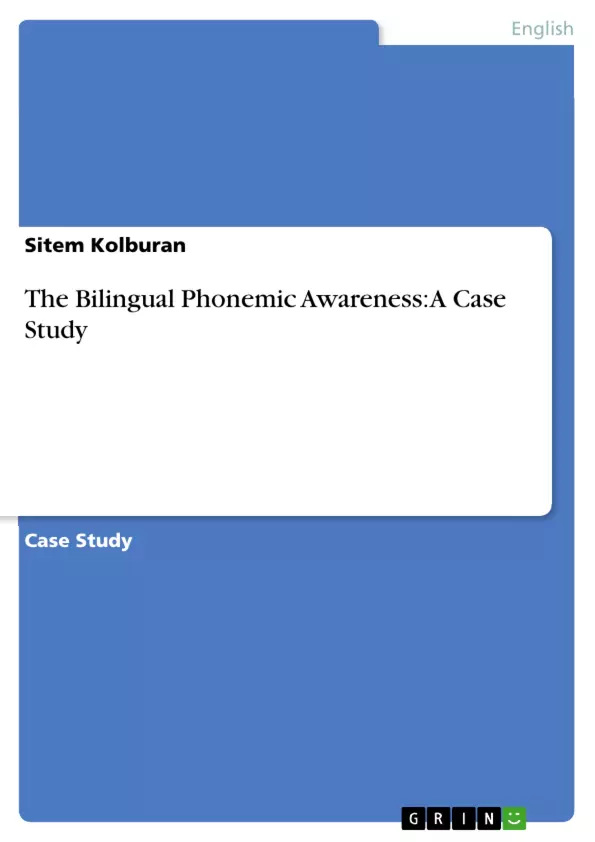This case study attempts to assess a bilingual child’s fluency in phonemic awareness and her skills in reading and writing. The child that was observed for this purpose currently attends the first grade of an elementary school in Long Beach. In terms of keeping the child’s anonymity the pseudonym “Maria” will be used throughout this paper instead of her actual name.
As part of this case study, I observed Maria first in her school classroom. During her reading lesson, Maria seemed to be shy and did not participate in the tasks her teacher assigned the class. For example, while her classmates were singing the alphabet-song altogether with the teacher, Maria did not seem to be interested and was talking to her classmates instead of being engaged in the class activities.
After observing her reading lessons, I met Maria individually to ask her some questions about her language background before starting with the actual assessment: Maria has a multilingual background as she can speak Spanish and English fluently. Also, she can read in both languages. At home, she mostly speaks Spanish with her mother and English with her sisters. Her mother is also the only person who reads stories to her. When she plays on the playground with her friends, she speaks both English and Spanish with them. Maria claimed that reading is easy for her; however, she thinks that it is harder than arithmetic. Maria’s favorite book which she got from the library is called “George” and additionally she has about ten books at home that she likes to read.
Inhaltsverzeichnis (Table of Contents)
- I. Introduction
- II. Description and Analyses
- 1. The Alphabet Knowledge Task
- 2. The Phoneme Segmentation Task
- 3. Nonsense Word Task
- 4. Reading Fluency and Comprehension Task
- 5. Elementary Spelling Inventory
Zielsetzung und Themenschwerpunkte (Objectives and Key Themes)
This case study investigates the phonemic awareness and reading and writing skills of a bilingual child named Maria. The study aims to assess Maria's proficiency in these areas and to analyze her performance on various tasks related to language development.
- Bilingualism and its impact on phonemic awareness
- Assessment of reading fluency and comprehension
- Analysis of spelling skills and development
- Identification of areas for improvement in language skills
- Potential influences of language background on reading and writing development
Zusammenfassung der Kapitel (Chapter Summaries)
The introduction provides background information on Maria, her language background, and her classroom experiences. The study details her performance in various assessments, including alphabet knowledge, phoneme segmentation, nonsense word reading, reading fluency and comprehension, and spelling.
The Alphabet Knowledge Task assesses Maria's ability to recognize and name letters. The Phoneme Segmentation Task evaluates her capacity to isolate and pronounce individual sounds within words. The Nonsense Word Task explores her ability to apply phonemic awareness to unfamiliar words.
The Reading Fluency and Comprehension Task assesses Maria's reading rate, accuracy, and understanding of text. The Elementary Spelling Inventory measures her spelling proficiency.
Schlüsselwörter (Keywords)
The primary keywords and focus topics include bilingualism, phonemic awareness, reading fluency, reading comprehension, spelling, language assessment, case study, and elementary school student.
- Quote paper
- Sitem Kolburan (Author), 2014, The Bilingual Phonemic Awareness: A Case Study, Munich, GRIN Verlag, https://www.hausarbeiten.de/document/335588


